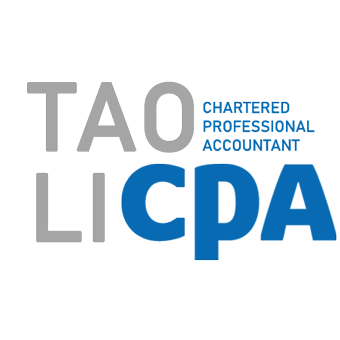Lorem ipsum dolor sit amet, consectetuer adipiscing elit. Aenean commodo ligula eget dolor. Aenean massa. Cum sociis natoque penatibus et magnis dis parturient montes, nascetur ridiculus mus. Donec quam felis, ultricies nec, pellentesque eu, pretium quis, sem.
Nulla consequat massa quis enim. Donec pede justo, fringilla vel, aliquet nec, vulputate eget, arcu. In enim justo, rhoncus ut, imperdiet a, venenatis vitae, justo. Nullam dictum felis eu pede mollis pretium. Integer.
- Donec posuere vulputate arcu.
- Phasellus accumsan cursus velit.
- Vestibulum ante ipsum primis in faucibus orci luctus et ultrices posuere cubilia Curae;
- Sed aliquam, nisi quis porttitor congue
The federal government has introduced a new income-splitting benefit for couples with children under the age of 18 as part of a series of proposed new tax measures designed to appeal to young families.
The proposal consists of three new measures, including the Family Tax Cut, which will allow a higher earning spouse to transfer up to $50,000 of taxable income to a spouse in a lower income bracket. The measure will provide eligible families with a maximum of $2,000 a year in tax relief.
The Universal Child Care Benefit for children under the age of 6 will also be increased from $100 to $160. A well, a new benefit of $60 per month is being created for children aged six to 17, and will come into effect on Jan 1.
The third new measure will see a $1,000 increase in the maximum amount that can be claimed under the Child Care Expense Deduction.
Prime Minister Stephen Harper announced the new measures Thursday afternoon at a community centre in Vaughan, Ont., just north of Toronto.
If so, you need to apply for a Certificate of Continuance by October 17, 2014, in order to transition to the Canada Not-for-profit Corporations Act (NFP Act). NPOs, charities and public institutions that are currently incorporated under Part II of the Canada Corporations Act need to apply for a certificate of continuance under the new NFP Act by October 17, 2014.
After that date, NPOs, charities and public institutions that have not continued will have their corporate status dissolved by Corporations Canada. Once an NPO, charity or public institution’s corporate status is dissolved, it ceases to exist as a legal entity. Where the corporation is a registered charity, the Canada Revenue Agency (CRA) will take steps to revoke the charity’s registration under the Income Tax Act. In addition, as a result of a change in legal status, an NPO, charity or public institution’s GST/HST registration status will change and the tax status of supplies and entitlements to recover GST/HST paid on purchases and expenses could change.
For more information on the transition to the new NFP Act for charities and public institutions, go to Transition to the Canada Not-for-profit Corporations Act (NFP Act) on the CRA website For information for NPOs, go to Industry Canada’s Transition Guide found on Industry Canada’s website at www.ic.gc.ca.
On September 17, 2014, the Government announced the introduction of the Small Business Job Credit to recognize the important contribution that small businesses across the country make to job creation and economic growth.
The Small Business Job Credit will apply to Employment Insurance (EI) premiums paid by small businesses in 2015 and 2016. The credit will be calculated as the difference between premiums paid at the legislated rate of $1.88 per $100 of insurable earnings and the reduced small business rate of $1.60 per $100 of insurable earnings in each of those years. Since employers pay 1.4 times the legislated rate, this 28-cent reduction in the legislated rate is equivalent to a reduction of 39 cents per $100 of insurable earnings in EI premiums paid by small employers. The 39-cent premium reduction will apply in addition to the premium reduction related to Quebec’s parental insurance plan, the Québec Parental Insurance Plan.
Any firm that pays employer EI premiums equal to or less than $15,000 in 2015 and/or 2016 will be eligible for the credit in those years.
As an example, a small business employing 14 employees, each earning $40,000, would ordinarily pay about $14,740 in EI premiums in 2015. However, since the total EI premiums paid by the employer are less than $15,000, it would be eligible under the Small Business Job Credit for a refund of about $2,200, which is the difference between employer premiums paid at the legislated rate versus the premiums calculated under the reduced small business rate ($12,540).
Businesses will not have to apply. The Small Business Job Credit will be automatically administered by the Canada Revenue Agency, which will determine eligibility and calculate the amount of the credit. Once calculated, the credit will be applied against any outstanding debt and then the remaining amount, if any, will be refunded to the small business.
This measure is expected to save small employers more than $550 million over 2015 and 2016. For detail please go to CRA website: http://www.cra-arc.gc.ca/whtsnw/tms/sbjc-eng.html.
Lorem ipsum dolor sit amet, consectetuer adipiscing elit. Aenean commodo ligula eget dolor. Aenean massa. Cum sociis natoque penatibus et magnis dis parturient montes, nascetur ridiculus mus. Donec quam felis, ultricies nec, pellentesque eu, pretium quis, sem. Nulla consequat massa quis enim.
Lorem ipsum dolor sit amet, consectetuer adipiscing elit. Aenean commodo ligula eget dolor. Aenean massa. Cum sociis natoque penatibus.
Lorem ipsum dolor sit amet, consectetuer adipiscing elit. Aenean commodo ligula eget dolor. Aenean massa. Cum sociis natoque penatibus et magnis dis parturient montes, nascetur ridiculus mus.
Donec quam felis, ultricies nec, pellentesque eu, pretium quis, sem. Nulla consequat massa quis enim. Donec pede justo, fringilla vel, aliquet nec, vulputate eget, arcu. In enim justo, rhoncus ut, imperdiet a, venenatis vitae, justo. Nullam dictum felis eu pede mollis pretium. Integer tincidunt. Cras dapibus. Vivamus elementum semper nisi.
Nullam dictum felis eu pede mollis pretium. Integer tincidunt. Cras dapibus. Vivamus elementum semper nisi. Aenean vulputate eleifend tellus. Aenean leo ligula, porttitor eu, consequat vitae, eleifend ac, enim. Aliquam lor
Donec quam felis, ultricies nec, pellentesque eu, pretium quis, sem.
Lorem ipsum dolor sit amet, consectetuer adipiscing elit. Aenean commodo ligula eget dolor. Aenean massa. Cum sociis natoque penatibus et magnis dis parturient montes, nascetur ridiculus mus.
Donec quam felis, ultricies nec, pellentesque eu, pretium quis, sem.
Lorem ipsum dolor sit amet, consectetuer adipiscing elit. Aenean commodo ligula eget dolor. Aenean massa. Cum sociis natoque penatibus et magnis dis parturient montes, nascetur ridiculus mus.
Donec quam felis, ultricies nec, pellentesque eu, pretium quis, sem.


